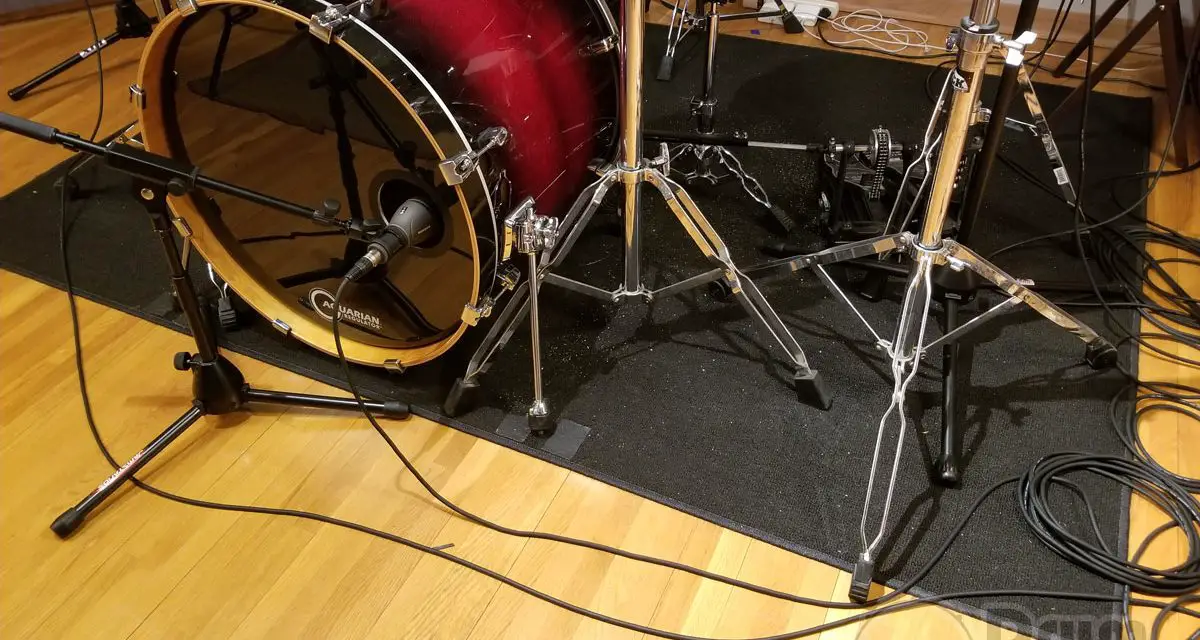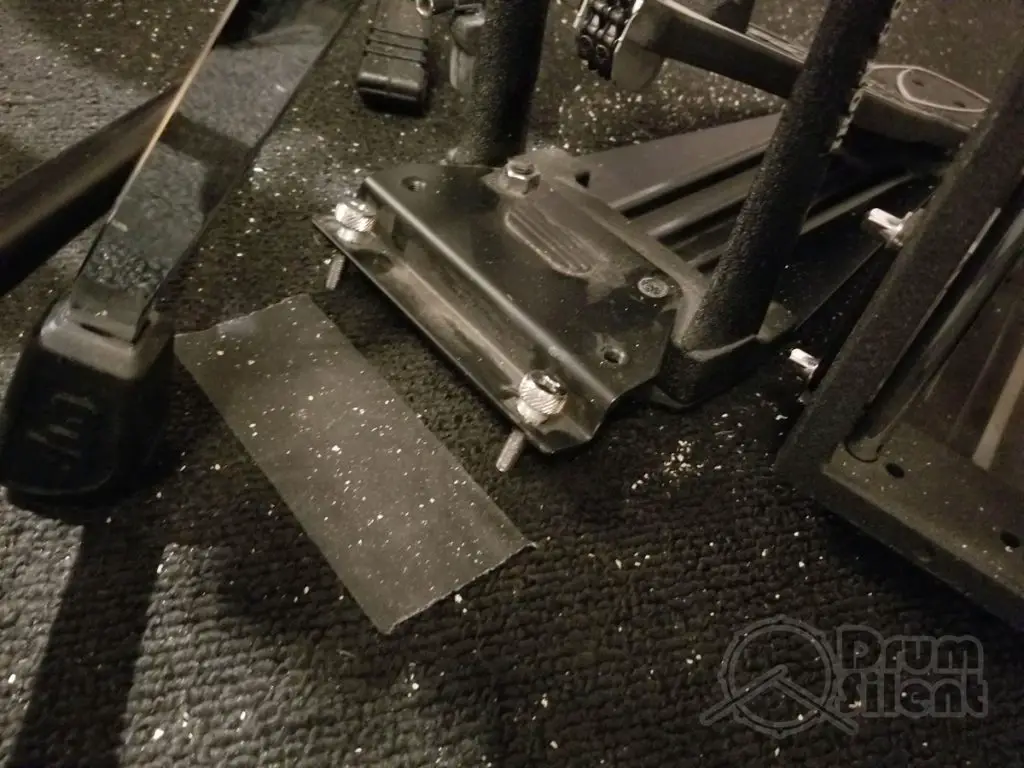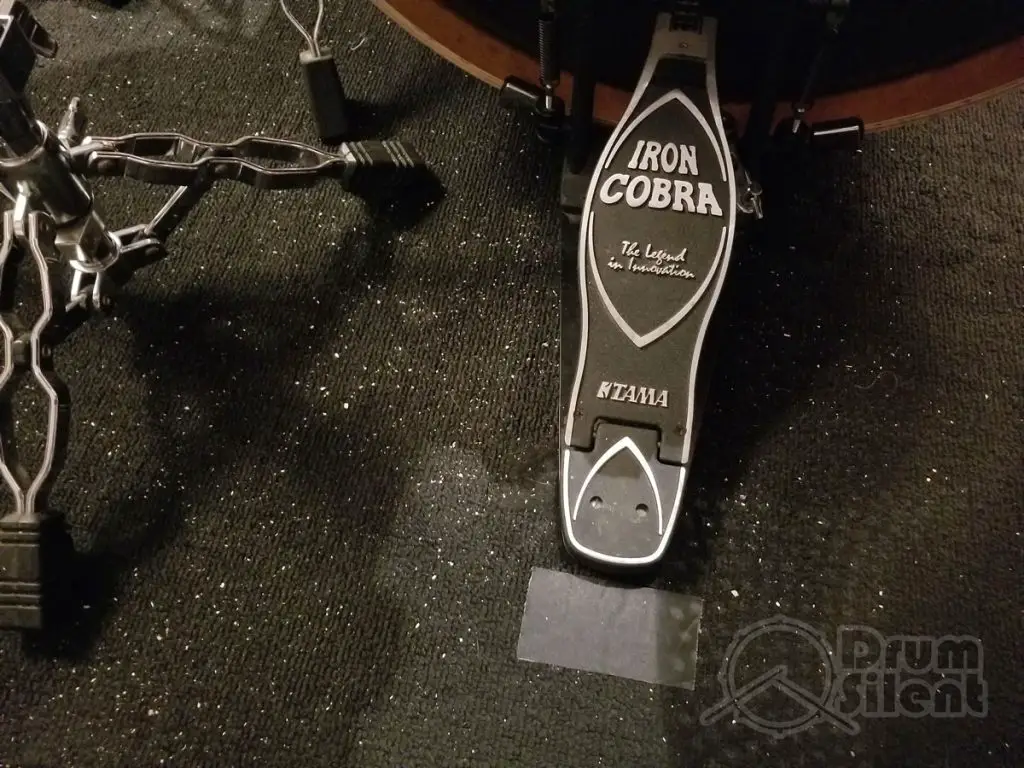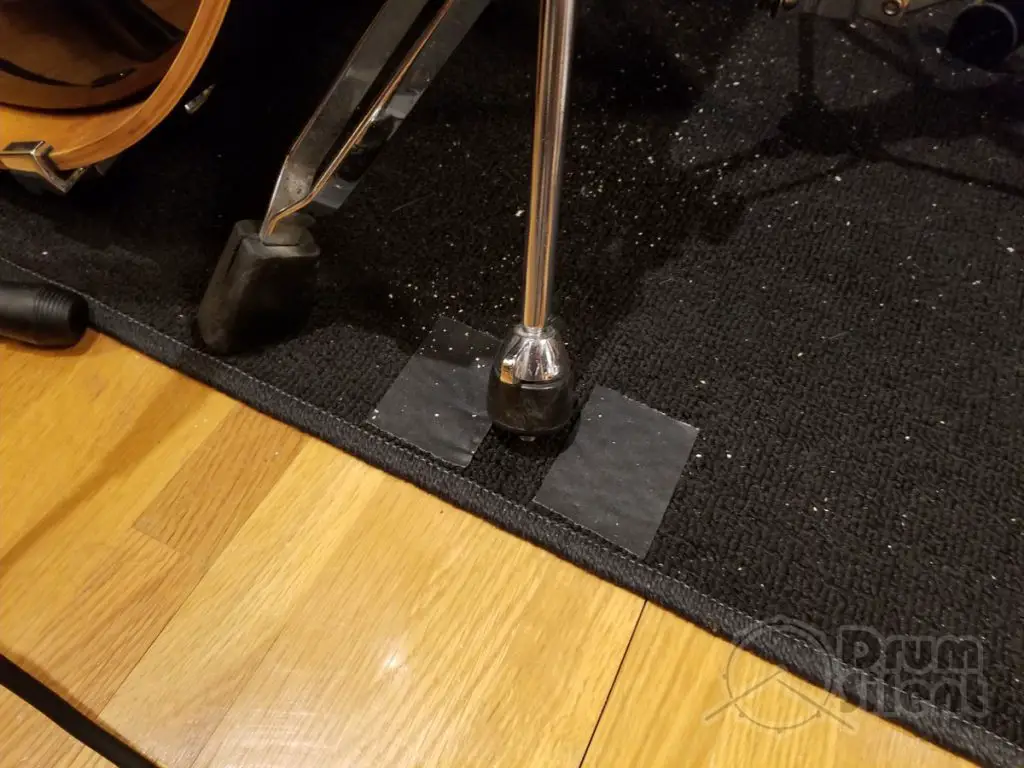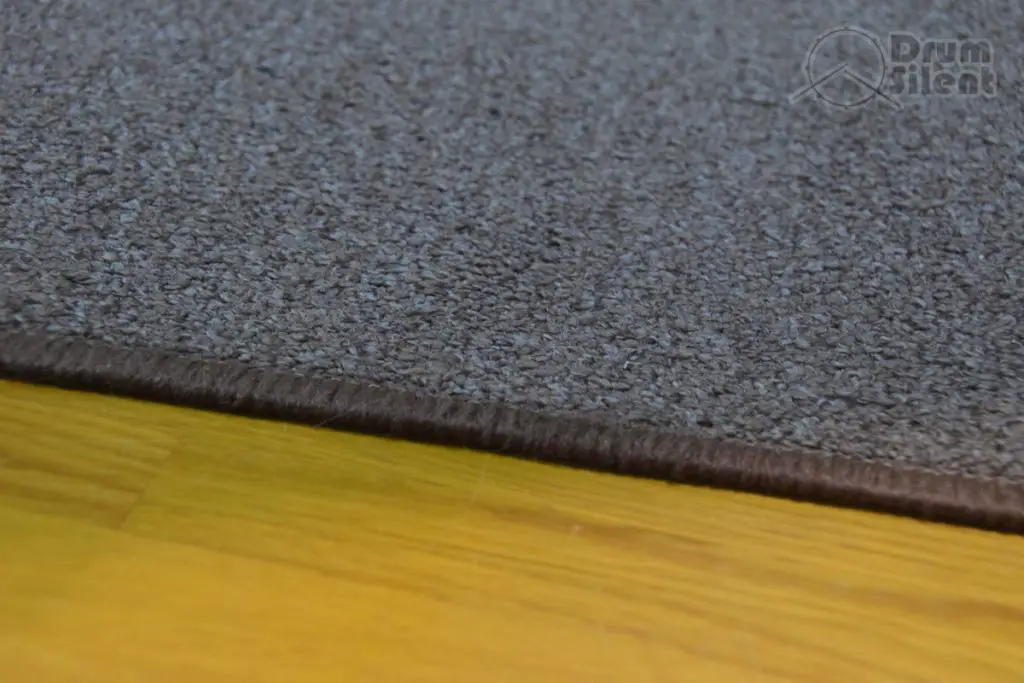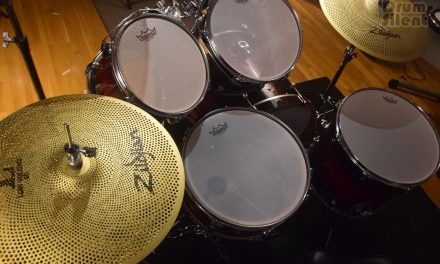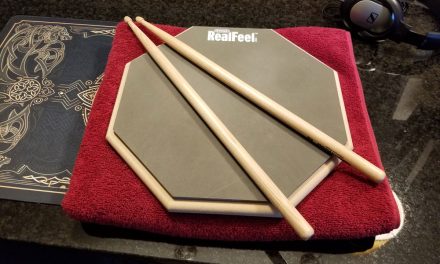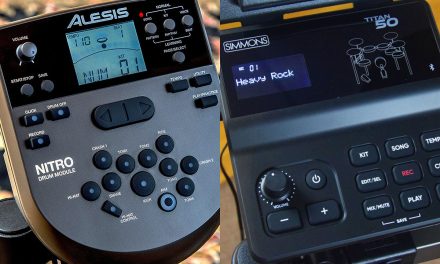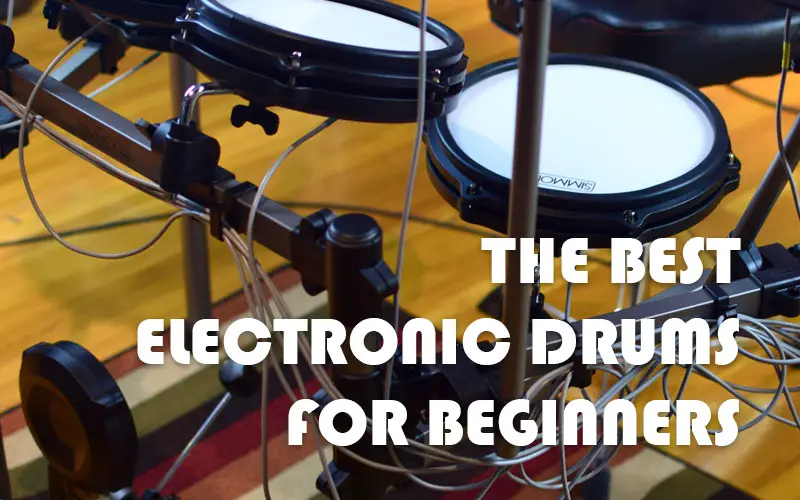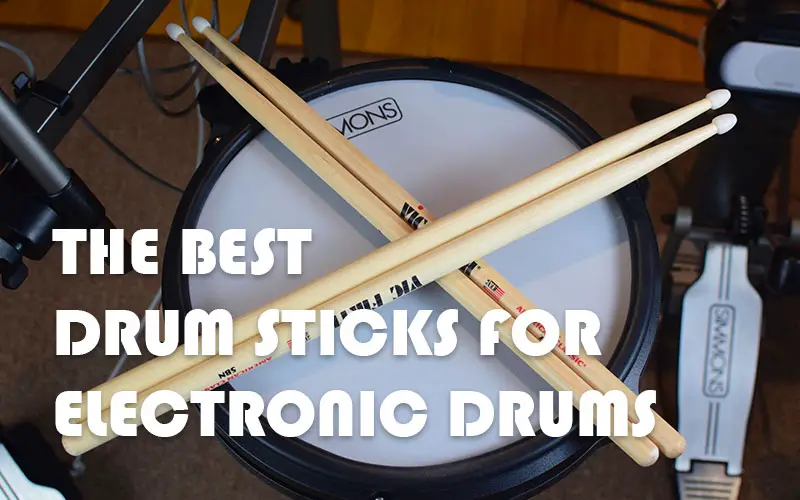Putting a heavy, flat rug under a drum kit is a common technique that drummers use to keep their drum kit and hardware from sliding around while playing. A rug can also help protect drum hardware and the floor underneath from friction related damage.
A Rug Helps Keep Your Drums In Place
Using a flat, heavy rug under your drum kit will give your drum hardware something to grip onto, which keeps stuff from sliding around while you are hammering away on the drums. If you were to put a drum kit on a flat, smooth surface, you’d notice that you’re drums and stands would start to slide around while playing, which is not ideal at all.
Most drum hardware that sits on the floor is designed to specifically grip onto carpeted surfaces to keep from moving around. Examples of this are the spurs on the front of a kick drum or kick pedal, or hook and loop (Velcro) materials on the bottom of pedals to keep them secured in place.
On my drum kit the kick drum has large spurs/spikes on the front that dig into the carpet to keep the kick drum from sliding forward. My double kick pedal has spurs on both the left and right pedals to keep them from moving. My hi-hat stand also has spurs on the front of the pedal as well as Velcro underneath to secure it to the carpet. That keeps those pieces in place while I’m playing, and effectively makes everything feel like it’s practically glued to the floor.
The benefit of using spurs and Velcro is that they don’t permanently attach to the rug. They can easily be removed from the rug when it’s time to pack it up.
Protect The Floor and Your Drum Hardware
If you’re setting up your drum kit on a nice hardwood or vinyl floor, the spurs and the bottoms of the stands could create wear and tear on the flooring materials if there’s nothing between the drum hardware and floor. If you’re setting up your drum kit on a rough concrete floor, like in a garage, the concrete could scrape the bottom of pedals or damage the tips of the spurs. It could even be possible to accidentally scrape up drums that are sitting on the ground during setup. A rug helps keep all those situations from causing damage by creating a protective layer between the drum kit and floor.
Positional Markings on the Rug Make It Easier to Set Up Your Drum Kit Consistently
Another nice benefit of using the same rug consistently with your drum kit is that you can use tape to mark where you like to position your hardware such as stands, the kick pedals and the kick drum. This helps to quickly and consistently setup a drum kit the same way each time it’s moved to a new location.
This technique can be invaluable to drummers who move their kit around a lot for gigs or otherwise. Being able to take the guesswork out of positioning your stands and hardware each time you setup the kit can be a huge plus when you’re rushing to get setup on stage quickly. I’m kind of picky about how I position my pedals, so this helps me know I’m getting it right every time I setup.
Personally, I like to use duct tape to mark on my drum rug where the double kick pedals go, where the hi-hat stand goes and where the kick drum sits. By just marking the location of those three, I can get my kit configured nearly the same every time when I’m moving it on stage or to a different practice spot.
If you use a drum rug this way, the rug pretty much becomes a permanent part of your drum kit, just like any of the other hardware.
The Best Type of Rug for a Drum Kit
As far as the type of rug, I find that heavy, flat rugs that don’t bunch up work best for drums. Berber style rugs with a low pile have worked the best for me. The lower the pile the better. You’ll probably want to avoid the soft, spongy feel of a thicker pile carpet.
Good examples of Berber rugs that work well for drums are entry-way rugs or area rugs. I’ve used entry rugs, the type with rubber on the bottom that you see in schools and office buildings, and they are nice since they are heavy and lay flat but they can be heavier to transport. I’m currently using a cheap 4×8, low pile area rug that I picked up from Walmart, and it works perfectly as a compact drum rug. It’s light enough when rolled up and I can easily haul it around. It’s also stiff and flat on the floor so it doesn’t bunch up when used, and it works well with both spurs and Velcro on my drum hardware.

